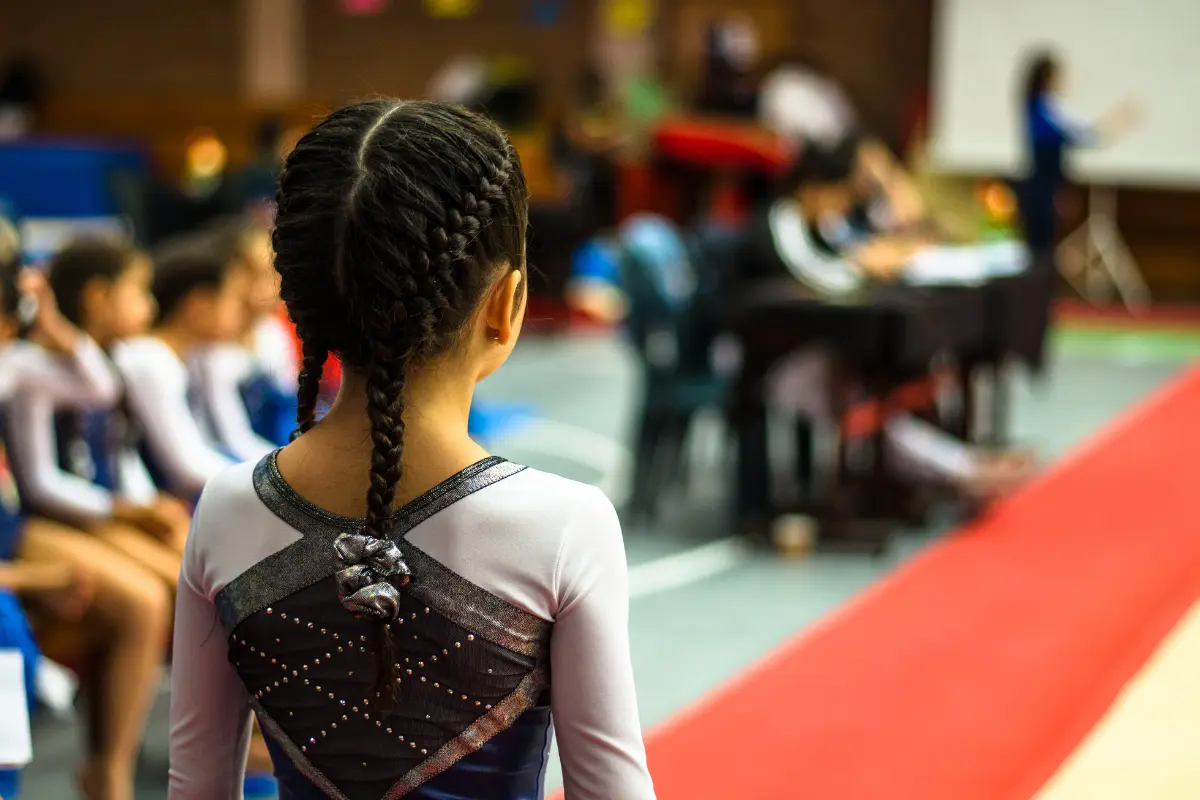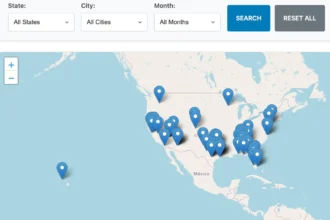Artistic gymnastics is one of the most watched sports in the Olympics, captivating audiences with its blend of strength, elegance, and daring acrobatics. But if you’ve ever paid close attention, you might have noticed something interesting: men and women don’t compete on the same events.
How Many Events Are in Artistic Gymnastics?
- Men compete in 6 events.
- Women compete in 4 events.
These events are performed in individual and team competitions, as well as all-around finals, where gymnasts are judged on their performance across all apparatuses.
Men’s Artistic Gymnastics (MAG): 6 Events
Men’s artistic gymnastics emphasizes strength, control, power, and swing mechanics. Here are the six events men compete in:
- Floor Exercise (FX)
Performed without music, this event includes powerful tumbling passes, strength holds, and balance elements. Emphasis is on height, control, and clean landings. - Pommel Horse (PH)
Gymnasts perform continuous circular leg movements and flairs while supporting their weight on their hands. It requires tremendous core and shoulder stability. - Still Rings (SR)
Known for its strength holds like the Iron Cross, the rings test upper-body control, muscle endurance, and stillness during suspended movements. - Vault (VT)
Gymnasts sprint down a runway, launch off a springboard, and execute high-flying flips or twists off the vault table before landing. - Parallel Bars (PB)
Routines include swings, balances, handstands, and release elements performed between two parallel bars. - Horizontal Bar (HB)
Also called the high bar, this event features giant swings, pirouettes, and release moves performed on a single bar above the floor.
Women’s Artistic Gymnastics (WAG): 4 Events
Women’s artistic gymnastics places more emphasis on grace, flexibility, and artistic presentation, especially in floor and beam routines. Here are the four events for women:
- Vault (VT)
Like the men’s event, gymnasts perform a running approach, springboard takeoff, and explosive aerial skills off the vault table. - Uneven Bars (UB)
Two bars at different heights allow gymnasts to perform swinging, release, and transition skills with rhythm and amplitude. - Balance Beam (BB)
A 10 cm-wide beam demands incredible balance and poise. Routines combine acrobatic skills, leaps, and turns performed with artistry and precision. - Floor Exercise (FX)
Set to music, women’s floor routines mix dance, expressive choreography, and powerful tumbling passes. Performance and presentation are key.
Shared Events: Vault and Floor Exercise
While most apparatuses are gender-specific, vault and floor exercise are shared between men and women—but with key differences in execution and rules.
Vault
Both men and women vault over the same apparatus (the vault table), but the height is adjusted to reflect average body dimensions and power output:
- Men’s table height: 1.35 meters
- Women’s table height: 1.25 meters
Men tend to have more explosive power and greater body mass, which requires a higher vault setup to ensure safety and space for aerial maneuvers.
Floor Exercise
Both perform on a 12×12 meter spring floor, but the styles diverge:
- Women: Perform to music with required dance and choreography elements between tumbling passes.
- Men: Perform without music, focusing solely on power, acrobatics, and non-dance strength elements.
The inclusion of music in women’s routines traces back to early 20th-century calisthenics and dance traditions, shaping the more artistic direction of Women’s Artistic Gymnastics (WAG).
Quick Comparison Table
| Event | Men ✅ | Women ✅ |
|---|---|---|
| Floor Exercise | ✅ | ✅ |
| Vault | ✅ | ✅ |
| Pommel Horse | ✅ | ❌ |
| Still Rings | ✅ | ❌ |
| Parallel Bars | ✅ | ❌ |
| Horizontal Bar | ✅ | ❌ |
| Uneven Bars | ❌ | ✅ |
| Balance Beam | ❌ | ✅ |
Why Do Men and Women Have Different Events in Gymnastics?
Men and women don’t compete on the same events in artistic gymnastics—not because one group can’t do what the other does, but because the sport was designed to show off different strengths and movement styles.
- Men’s events focus on power, strength, and control
- Women’s events highlight balance, flexibility, and grace
Let’s take a closer look at the events that are unique to each and why they suit the athletes who compete on them.
Men-Only Events
1. Still Rings
Why it suits men:
The rings require huge upper-body strength. Gymnasts must hold their bodies still in the air and perform strong, controlled moves without swinging.
Physical advantage:
Men usually have more upper-body muscle and broader shoulders, which helps them stay steady during these tough strength skills.
2. Pommel Horse
Why it suits men:
Gymnasts move their legs in circles while supporting their body on their arms. It takes rhythm, shoulder strength, and endurance.
Physical advantage:
Men’s longer arms and body proportions give them better swing and reach on the pommel horse. For most women, it’s harder to generate the same motion efficiently.
3. Parallel Bars
Why it suits men:
Routines on the parallel bars mix swings, handstands, strength holds, and big dismounts.
Physical advantage:
The bars are spaced to match men’s shoulder width. Combined with strong arms and upper bodies, this lets male gymnasts perform powerful and dynamic moves.

Women-Only Events
4. Balance Beam
Why it suits women:
The beam is only 10 cm wide. Gymnasts perform flips, jumps, and dance moves with balance and precision.
Physical advantage:
Women often have a lower center of gravity, more hip flexibility, and smaller feet—making it easier to stay steady and graceful on the beam.
5. Uneven Bars
Why it suits women:
The bars are set at two different heights. Routines include swings, turns, and flying transitions between bars.
Physical advantage:
Shorter arms and lighter bodies help female gymnasts move quickly and smoothly between bars with flow and rhythm.
Do These Differences Limit Athletes?
Not at all. Both men and women perform incredibly demanding routines tailored to their apparatuses. While the events differ, the training, discipline, and athleticism required are equally elite.
Some gymnasts (especially in exhibition or adult classes) cross-train on both sets of apparatus for fun or personal challenge, but in official competition, each gender sticks to their defined events.






